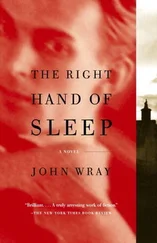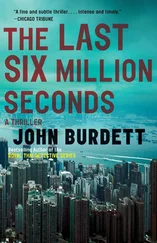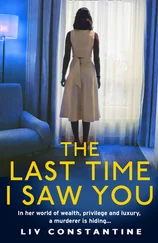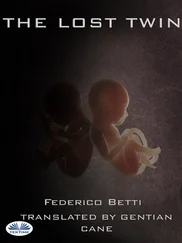GROUP 3 (“Skartins”) will be maintained as per Groups 4 & 5 above & housed in building 13, currently a storehouse for low-bulk Imperishables. Treatment of Subjects will in no respect differ from the Population at large, with the exception that Subjects will be confined to building 13 & fed a mixture of standard camp Rations & a combination of steppe grasses, common clover & delphinium shoots. The Proportion of “indigestibles” to standard rations will be increased in Increments (3 to 5 parts per hundred weekly, weekly to bi-weekly, pendentes progressum). Digestive & metabolic Diagnostics will be run 3x times weekly. At close of study (projected at 12 months) Autopsies will be performed, with special attention given to gastrointestinal Diversions, condition of mucal lining, cystic morphologies, &c.
GROUP 2 (“Kavall”) will be confined to outbuilding 29, a narrow brick Structure (26 by 6 meters) predating the Construction of the camp, originally used for the drying & tanning of leather. By means of a masonwork Alteration to the Interior (pending), the tanning room (16 by 18.6 meters) will be partitioned into 60 enclosures of 1.6 by 1.8 meters. Subjects will be conjoined with the rear Wall by means of reinforced sackcloth Straps (see fig. 1–6), restricting Freedom of movement to the use of the face, jaw & uppermost 7 vertebrae. Standard camp rations will be positioned (by means of movable shelving) just within the projected Radius of movement, & refreshed 3x weekly. Rations will be located to Subject’s left in the case of right-handed individuals, to Subject’s right in the opposite case. Medical examinations will be performed bi-weekly or as Conditions dictate. Autopsies at close of Study (projected at 6 months) will target Developments in dentition, spinal & muscular Morphology (allowing for anticipated atrophic Effects) & development/degeneration of the lymphatic Network, as well as the superior & inferior spinal canal.
EXPECTED RESULTS — Confirmation, in a statistically significant Number of cases, of the Chevalier’s proposition of spontaneus morphogenesis. Subjects demonstrating clear changes in Morphology will then (in Phase 2) be bred with randomly selected & morphologically Orthodox females, to demonstrate the Heritability of Traits thus acquired.
RESULTS & DISCUSSION will duly be entered Below at close of Phase 1 of this study, presently projected at 15 OCTOBER 1944, 12:00:0 °CET.
GROUP 1 (“Sküs”), belonging to a distinct sub-class of Research—& requiring, as it does, particular & heightened Discretion — will be discussed in a separate Entry.
17 MARCH 1943, 21:17:47—
It has come to my Attention (with all due thanks to Chance & Fate & Providence) that a number of physicists of Repute are to be found among the Occupants of Enclosure 6: Including no less a figure — as I’ve just now learned, to my Astonishment — than Hermann Borofsky, mentor to Bohr in Berlin, & previously to the Clerk himself.
This is indeed invigorating News. Borofsky can surely be made to acknowledge the decadence of the Relativity postulate, especially after assisting me in the Protocols described above. If not, Justice may be served via more prosaic Measures: incorporation into GROUP 1 (“Sküs”).
Let the perpetrators of the Lie refute the Lie. Borofsky, & none other, shall be the Instrument by which I puncture Time.
Höhne’s extract ends here. Waldemar’s journal, previously so precise, soon degenerates into a chicken-scrawled list of times of day (down to hundredths, then thousandths of seconds) before abruptly stopping in midsentence.
Debate continues to rage among Holocaust scholars as to what, precisely, the “distinct sub-class of Research” could have been to which the mysterious GROUP 1 (“Sküs”) was subjected, and — for that matter — whether the Gottfriedens experiments were ever in fact carried out. Digs at the Czas site have turned up evidence that buildings 13, 16, 27 and 29 were indeed modified as per Waldemar’s schematic, but the lye-covered mass graves into which the bodies of those killed at Äschenwald were pitched have made reliable forensic work impossible. As I’ve said, it’s one of the many enigmas surrounding the Timekeeper that he covered his tracks so expertly, then left written evidence of his deeds — or his intentions — for the whole world to be nauseated by.
It occurs to me now, reading what I’ve just written, that an alternate explanation — an equal and opposite theory — might also account for the ledger. Waldemar’s experiments, perverse as they are, have little meaning unless considered in light of the Accidents. He must have known, even then, that no one outside the family would fully grasp what he’d been after; leaving his protocols behind for the world to goggle over, however, was also the surest means of bringing them to the attention of his kin. Who was more likely to study his work, after all, than those who felt themselves complicit in his crimes?
In that sense, Mrs. Haven, the ledger was a message meant for me.
* * *
The Timekeeper’s generosity in supplying posterity with riddles would have sufficed to make him the darling of Holocaust Studies departments worldwide, most likely, but one mystery in particular accounts for his fame. For reasons never clearly explained, the guards and administrators of Äschenwald — unlike at Treblinka, for example, not fifty kilometers distant — remained at the camp until the Soviets overran it; what’s more, according both to camp records and eyewitness accounts, Waldemar himself was present to the last. Most of the facility personnel died in the ensuing firefight, Kalk and Bleichling among them; but Facility Director von Toula, when the smoke finally cleared, was nowhere to be found. Neither was he intercepted or killed in the following weeks, either by the Soviets or by the numerous bands of partisans that roamed the Polish woods. As far as anyone could determine, he’d vanished into thin air, as if the German defeat had triggered a spontaneous mutation that had suddenly rendered him invisible, or immaterial, or simply null and void. The cellar he’d used as an office was spared by the fire, but the items recovered from it did nothing to explain his disappearance: an overturned beaker on a desktop, a random-seeming collection of books, a cameo portrait of a child in lederhosen, and a trip wire of sorts, running along the floor from the desk to a pile of rubble where a wall had fallen in. The rubble was sifted through carefully, needless to say, as part of the ongoing search. The wire was determined to lead nowhere.
Years later, when the contents of the Gottfriedens ledger were finally made public, any number of legends about the Timekeeper made the rounds, particularly among those fortunate few who’d survived both the camp and its fiery end. He had buried himself alive, breathing through a length of copper pipe; he had disguised himself in prison clothes and let the Russians liberate him; he had turned himself in, offered his services to Stalin, and been put to work with no further questions asked. Most popular of all, however, was a theory inspired by the ledger itself: Waldemar had escaped not geographically — through the three spatial dimensions — but chronologically, through the fourth. He’d made a man-sized hole in time, in other words, and wriggled through it.
Höhne and most other historians dismiss the tail end of the ledger as gibberish, Mrs. Haven, but I think otherwise. The last full entry in particular reads as a kind of dissociative update of Ottokar’s posthumous note, the piece of primordial bunkum that started it all:
Frantic idiots from forested Fiefdoms follow Freely in my footsteps. Only Light can move at the Speed of light, because only Light is light enough to do so. It has no Mass: ergo. But what is meant by “Mass”? Where does Mass come from? Where does Mass occur? The Pulpit for Preachers at Paměť Cathedral. Mass occurs 2x daily, 3x on Sunday. A Pulpit tends to look like a Pissoir.
Читать дальше












